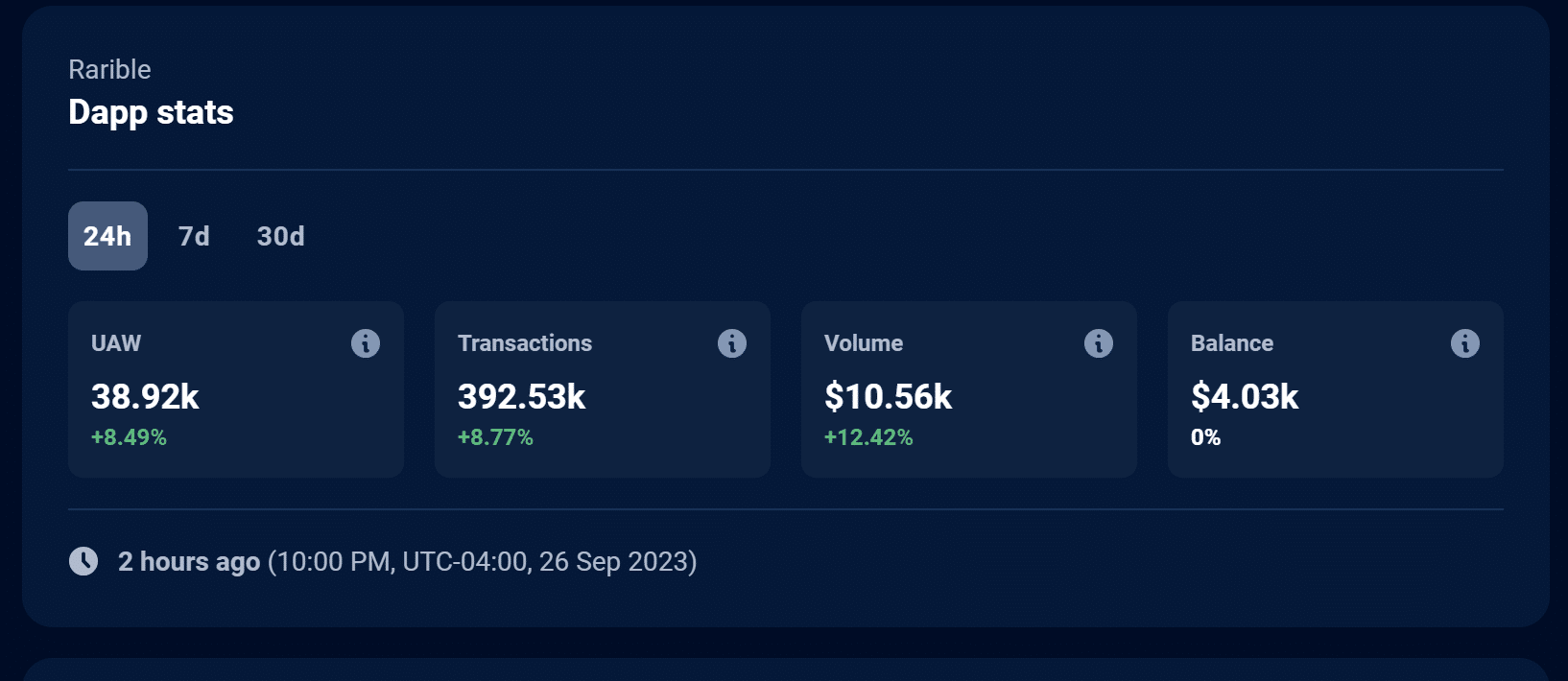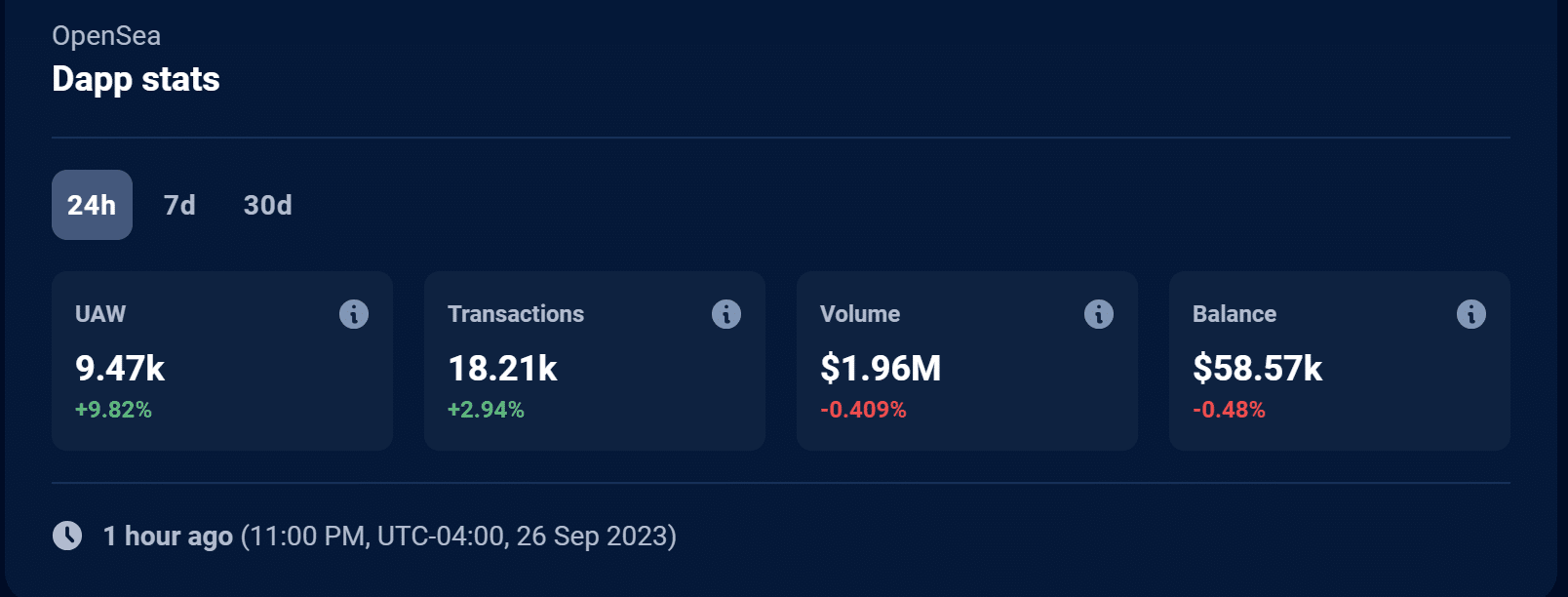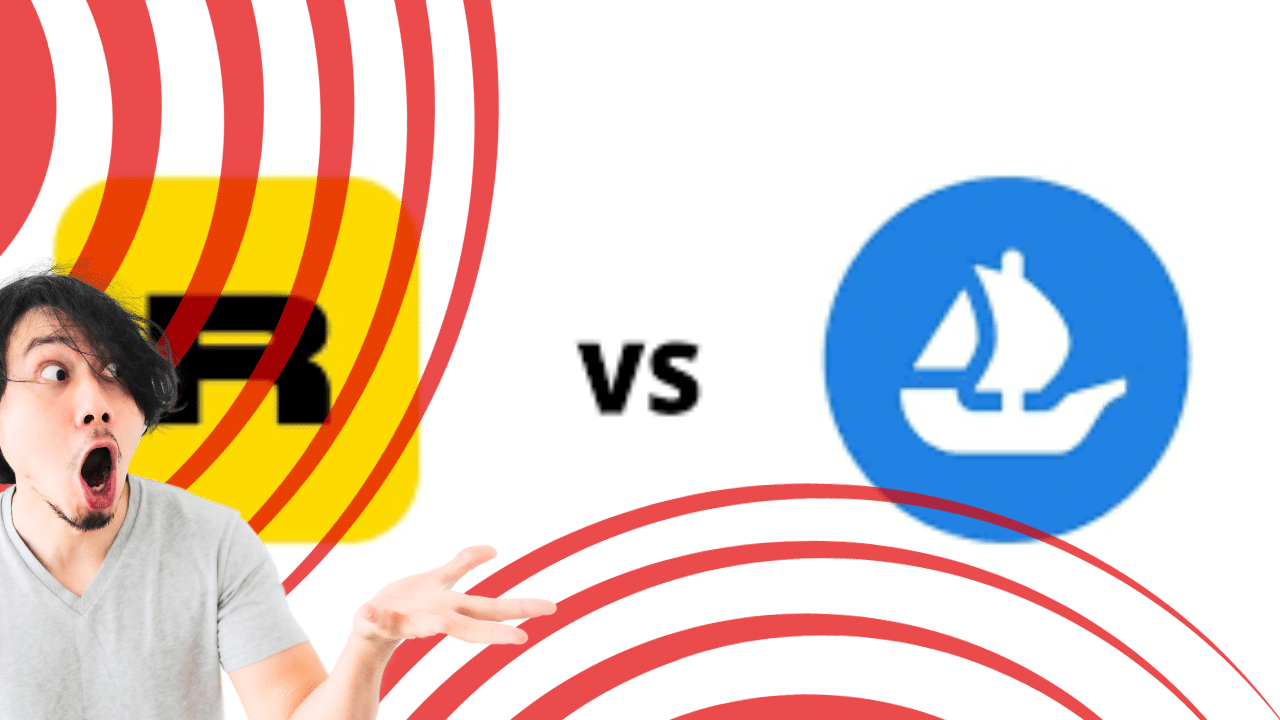Contents
|
|
Have you ever wondered which NFT marketplace is the right fit for trading NFTs and listing your creative endeavors? If you’re looking to dive into the world of digital collectables, two prominent marketplaces, Rarible and Opensea, offer exciting opportunities for buying and selling digital assets on blockchains. But how do the two approaches, services and investment, differ, and which one should you choose?
Both crypto platforms have gained significant traction due to their decentralized approach and commitment to blockchain technology. They are the clear winners in this space. Rarible’s blockchain approach emphasizes user-generated content, fostering a vibrant community where creativity thrives and making it a winner. On the other hand, Opensea’s extensive catalog appeals to collectors with diverse interests, solidifying its position as a winner in the industry.
Contents
NFT Marketplace Comparison: Features and Functionality
Two popular blockchain platforms that come to mind are Rarible and Opensea. Their approach is widely recognized in the market. While both blockchain platforms serve as a hub for buying, selling, and trading non-fungible tokens (NFTs), they differ in their approach to certain features and functionality. Let’s take a closer look at the approach that sets blockchain apart.
Customizable vs Standardized Approach
Rarible offers users the ability to create unique NFTs with customizable features using a blockchain approach. This means artists and creators have more flexibility in designing their digital assets using blockchain, allowing for a greater level of creativity and personalization. On the other hand, Opensea takes a more standardized approach, providing a platform that supports a wide variety of digital assets such as art, domain names, virtual worlds, game assets, and more. With Opensea’s blockchain-based platform, users can easily buy and sell their digital assets securely. While Rarible focuses primarily on art-based NFTs, Opensea caters to a broader range of digital asset categories.
Buying and Selling Options
Both Rarible and Opensea provide users with options to buy, sell, and trade NFTs through various methods. Auctions are one popular method available on both platforms where users can bid on NFTs until the auction ends. Fixed-price listings are another option offered by both platforms where users can set a specific price for their NFTs.
Rarible also introduces an interesting feature called “minting,” which allows users to create new NFTs directly on the platform. This feature gives artists the opportunity to showcase their work without needing prior approval from curators or gatekeepers. In contrast, Opensea does not have this minting feature but instead relies on external smart contracts for creating new NFTs.
Native Tokens vs Ethereum
One notable difference between Rarible and Opensea lies in their use of native tokens. Rarible has its own native token called RARI, which users can earn and use within the platform. This token serves various purposes, including governance rights and incentives for active participation. On the other hand, Opensea operates primarily using Ether (ETH), the native cryptocurrency of the Ethereum blockchain. Users on Opensea transact with ETH when buying or selling NFTs.
User Interface and Experience
Both Rarible and Opensea strive to provide a user-friendly environment for navigating through their platforms. However, some users may find Rarible’s interface slightly more intuitive due to its focus on art-based NFTs. Opensea’s broader range of digital assets may require users to navigate through different categories and sections to find what they are looking for.
Community Engagement and Reviews
Both Rarible and Opensea boast a large user community with active engagement from artists, collectors, traders, and enthusiasts. These communities contribute to the overall growth of each platform by participating in discussions, providing feedback, sharing insights, and showcasing their collections.
Opinions vary among users regarding their experiences with Rarible and Opensea. Some users prefer Rarible for its customizable features and artist-centric approach, while others appreciate Opensea’s wider selection of digital assets. It is important for potential users to consider these reviews alongside their individual needs when choosing a marketplace.
Evaluating Trading Fees: Rarible vs Opensea
Two popular platforms that often come up for comparison are Rarible and Opensea. Both platforms have their own fee structures in place, and understanding these fees is crucial when deciding which marketplace to use for buying or selling NFTs. Let’s take a closer look at the trading fees charged by Rarible and Opensea.
Rarible Trading Fees
Rarible charges a 2.5% fee on each transaction made on its platform. This fee applies to both buyers and sellers, meaning that if you sell an NFT on Rarible, you will be subject to this fee. Similarly, if you purchase an NFT from another user on Rarible, you will also need to factor in this additional cost.

Opensea Trading Fees
On the other hand, Opensea follows a slightly different fee structure. While it imposes a 2.5% fee for sellers, it does not charge any additional fees to buyers. This means that as a buyer on Opensea, you won’t have to worry about paying any extra fees beyond the listed price of the NFT. However, if you decide to sell an NFT on Opensea, you will be responsible for paying the 2.5% seller’s fee.

Considerations When Choosing Between Rarible and Opensea
When deciding between these two marketplaces based on trading fees alone, there are a few factors worth considering:
-
Seller vs Buyer Perspective: If you primarily plan on selling your own NFTs, then Rarible may seem more appealing due to its lower buyer’s fee compared to Opensea’s lack of such a fee altogether.
-
Buyer’s Perspective: On the other hand, if your focus is on purchasing NFTs rather than selling them, Opensea might be the better choice for you. With no additional fees for buyers, you can avoid any surprises and keep your expenses in check.
-
Additional Fees: It’s important to note that trading fees are not the only costs associated with NFT transactions. Minting fees, gas fees (network transaction fees), and other platform-specific charges may also come into play. Consider these additional costs when evaluating the overall expense of using Rarible or Opensea.
-
Platform Features: While trading fees are an essential consideration, they should not be the sole determining factor in choosing a marketplace. Take into account other features and functionalities offered by Rarible and Opensea, such as user interface, community engagement, ease of use, and available collections.
-
Marketplace Popularity: Another aspect to consider is the popularity of each marketplace within the NFT community. Opensea has established itself as one of the leading platforms for buying and selling NFTs, boasting a wide range of listings from various artists and creators. Rarible, although growing in popularity, may have a smaller user base compared to Opensea.
Ultimately, the decision between Rarible and Opensea depends on your specific needs as a buyer or seller in the NFT market.
Analyzing Royalty Fees: Rarible vs Opensea
Both Rarible and Opensea offer creators the opportunity to earn ongoing income from secondary sales of their Non-Fungible Tokens (NFTs) through royalty fees. This feature allows artists to continue profiting even after their initial sale, making it an attractive option for those seeking long-term monetization.
Rarible’s Royalty Fees
Rarible provides creators with the ability to set royalty rates on their NFTs, allowing them to earn passive income each time their artwork is resold. The platform offers a maximum royalty rate of 10%, giving artists control over how much they can earn from subsequent sales. By setting a higher royalty fee, artists can ensure they receive a larger portion of the profits as their work gains value in the market.
Pros:
-
Artists have control over setting their own royalty rates.
-
Higher royalty rates allow for potentially greater earnings from secondary sales.
-
Provides an additional stream of income for artists in the long term.
Cons:
-
Setting high royalty rates may deter potential buyers who are unwilling to pay higher fees.
-
Artists may need to strike a balance between earning royalties and attracting buyers with competitive pricing.
Opensea’s Royalty Fees
Opensea also incorporates royalty fees into its platform, allowing artists to earn ongoing income from secondary sales. By default, Opensea sets a 10% royalty rate for creators, but individual artists have the flexibility to adjust this percentage according to their preferences. This customization ensures that artists can tailor their royalties based on factors such as market demand or perceived value of their work.
Pros:
-
Artists can customize their royalty rates based on individual preferences.
-
Flexibility allows for adjustments according to market conditions or perceived value.
-
Offers a consistent source of income for artists as their NFTs are resold.
Cons:
-
Artists may need to research and analyze market trends to determine the optimal royalty rate.
-
Adjusting royalty rates too frequently may create confusion among potential buyers.
Monetizing Art in the Long Term
The ability to earn royalties from secondary sales is a crucial aspect for artists looking to generate continuous income from their artwork. Both Rarible and Opensea recognize this need and provide creators with the means to benefit financially beyond the initial sale. By incorporating royalty fees, these platforms empower artists to establish passive income streams while retaining ownership of their digital creations.
For creators, it’s important to consider various factors when determining royalty rates. Setting a higher percentage can increase potential earnings but may also discourage buyers who are reluctant to pay higher fees. On the other hand, setting lower rates could attract more buyers but result in reduced long-term revenue. Striking a balance between competitive pricing and earning royalties is key to maximizing profits on these platforms.
Exploring NFT Collections: Opensea and Rarible
Opensea and Rarible are two popular platforms in the world of non-fungible tokens (NFTs). While both offer a wide array of digital collectibles, they have distinct focuses and cater to different interests. Let’s delve into these platforms and see what sets them apart.
Opensea: A Hub for Diverse NFT Collections
Opensea is a leading marketplace that hosts an extensive collection of NFTs, ranging from digital art to virtual real estate and game items. It provides a platform for creators to mint, buy, sell, and trade their unique assets. With its vast user base, Opensea attracts a significant number of visitors who are eager to explore the diverse range of offerings.
Pros:
-
Offers a wide variety of NFT collections.
-
Provides opportunities for artists, gamers, and collectors alike.
-
Allows users to create their own collections.
Cons:
-
Can be overwhelming due to the sheer volume of listings.
-
Quality control may vary since anyone can create and list NFTs.
Rarible: Focusing on Art-Based NFT Collections
Rarible is another prominent player in the NFT space but with a primary focus on art-based collections created by individual artists. It offers a platform for artists to showcase their work in digital form, enabling them to reach a global audience. Rarible emphasizes the importance of supporting artists through royalties earned from secondary sales of their artworks.
Pros:
-
Highlights individual artists’ creations.
-
Promotes fair compensation through royalty fees.
-
Encourages community engagement with governance token rewards.
Cons:
-
Limited emphasis on other types of NFT collections like gaming or virtual real estate.
-
Smaller user base compared to Opensea.
The Appeal of Both Platforms
While Opensea and Rarible differ in their main focuses, they share some commonalities that attract users to their platforms:
-
Artistic Expression: Both platforms provide a space for artists to showcase their creativity and monetize their digital art. Artists can gain recognition and support from a global audience.
-
Ownership and Scarcity: NFTs are built on blockchain technology, ensuring the uniqueness and scarcity of each item. Collectors value this aspect as it grants them ownership of a one-of-a-kind piece.
-
Community Engagement: Opensea and Rarible foster communities where artists, collectors, and enthusiasts can connect, collaborate, and support each other’s work. This sense of community adds value to the overall experience.
-
Investment Potential: Some NFTs have gained significant value over time, making them attractive investment opportunities for collectors who believe in the long-term potential of certain digital assets.
-
Governance Tokens: Rarible introduces governance tokens that allow users to participate in decision-making processes within the platform’s ecosystem. This feature encourages active involvement from community members.
Wallet Support: Rarible vs Opensea
Rarible and Opensea are both popular marketplaces for buying and selling NFTs (non-fungible tokens). One important aspect to consider when choosing a platform is the wallet support it offers. Let’s take a closer look at how Rarible and Opensea handle wallet integration.
Rarible Wallet Support
Rarible provides users with a range of options. This flexibility allows users to choose their preferred Ethereum wallet for interacting with the marketplace. Some of the wallets supported by Rarible include MetaMask, WalletConnect, Fortmatic, Portis, and Torus.
-
MetaMask: MetaMask is one of the most popular Ethereum wallets in the market. It offers a user-friendly interface and allows seamless transactions on Rarible.
-
WalletConnect: WalletConnect is another widely used option that enables users to connect their mobile wallets to Rarible securely.
-
Fortmatic: Fortmatic is known for its easy setup process and smooth user experience. It provides an additional choice for those looking for a convenient way to interact with Rarible.
-
Portis: Portis is a non-custodial wallet that ensures high security while offering a simple onboarding process for new users.
-
Torus: Torus aims to simplify blockchain interactions by providing one-click logins using social media accounts.
By supporting various Ethereum wallets, Rarible caters to different user preferences and needs. This broad compatibility makes it easier for individuals already using specific wallets or looking for specific features.
Opensea Wallet Support
Opensea also integrates with several popular Ethereum wallets, ensuring smooth transactions within the marketplace. Two notable options are MetaMask and Coinbase Wallet.
-
MetaMask: As mentioned earlier, MetaMask is widely recognized as one of the go-to choices. Its integration with Opensea allows users to seamlessly connect their wallets and engage in NFT transactions.
-
Coinbase Wallet: Coinbase Wallet is another well-known option that provides a secure and user-friendly experience for managing Ethereum assets. Its compatibility with Opensea offers users an additional wallet choice.
When choosing a marketplace, it is crucial to ensure compatibility between your chosen wallet and the platform you intend to use. This compatibility ensures a smooth experience without any hiccups during transactions or interactions.
Security Considerations: Rarible vs Opensea
Both Rarible and Opensea prioritize the protection of user accounts. They implement various measures, including two-factor authentication (2FA), to ensure that users’ assets and personal information are safeguarded. However, it is important for users to exercise caution and be aware of potential security risks when using these platforms.
Two-Factor Authentication (2FA)
Both Rarible and Opensea offer two-factor authentication as an additional layer of security. This feature requires users to provide a second form of verification, such as a unique code sent to their mobile device or email address, in addition to their password. By enabling 2FA, users can significantly reduce the risk of unauthorized access to their accounts.
Interacting with Third-Party Contracts
While Rarible and Opensea have implemented security measures within their platforms, users should still be cautious when interacting with third-party contracts. These contracts may include smart contracts associated with specific NFTs or decentralized applications (DApps) built on top of the platforms.
It’s crucial for users to thoroughly review the details of any contract they interact with and understand its implications before proceeding. Scammers may attempt to exploit vulnerabilities in these contracts or deceive users into engaging in fraudulent transactions. Therefore, it’s essential for users to exercise due diligence and verify the legitimacy of any contract they encounter.
Staying Informed about Scams and Phishing Attempts
In the world of crypto art and NFT marketplaces, scams and phishing attempts are unfortunately prevalent. It is crucial for users to stay informed about potential threats and scams that may target them while using either Rarible or Opensea.
One way to stay updated is by following official announcements from the platforms themselves. Both Rarible and Opensea regularly communicate important security updates through their official channels, such as their websites, blogs, and social media accounts. By staying informed about the latest security information, users can better protect themselves from potential scams.
It is important to be cautious of unsolicited emails or messages that may attempt to trick users into revealing their login credentials or personal information. Phishing attempts can be sophisticated and appear legitimate, so it’s essential to double-check the source of any communication before taking any action.
Choosing the Best NFT Marketplace
Now that we have explored various aspects of Rarible and Opensea, it’s time to choose the best NFT marketplace for you. Both platforms offer unique features and functionality, but your decision should ultimately be based on your specific needs and goals as an artist or collector.
Consider factors such as trading fees, royalty fees, available collections, wallet support, and security considerations. Think about what matters most to you – whether it’s maximizing profits, showcasing your work to a wide audience, or having a user-friendly experience.
Ultimately, the choice between Rarible and Opensea comes down to personal preference. Take the time to explore both platforms thoroughly, experiment with their features, and consider how they align with your artistic vision or collecting interests. Remember that the NFT space is constantly evolving, so staying informed about new developments can help you make informed decisions.
FAQs
Can I sell my NFTs on both Rarible and Opensea?
Yes! Both Rarible and Opensea allow users to create and sell their own NFTs. You can list your digital artworks or collectibles on either platform based on your preferences.
How do trading fees differ between Rarible and Opensea?
Rarible charges a 2.5% fee for each transaction made on its platform. On the other hand, Opensea charges a 2% fee for sales completed through its marketplace. It’s important to factor in these fees when considering which platform is more suitable for your needs.
Can I buy NFTs using different cryptocurrencies?
Yes! Both Rarible and Opensea support multiple cryptocurrencies for purchasing NFTs. Ethereum (ETH) is commonly used on both platforms; however, some collections may also accept other cryptocurrencies like Wrapped Bitcoin (WBTC) or DAI.
Are there any restrictions on the types of NFTs I can sell?
Rarible and Opensea have relatively open policies regarding the types of NFTs that can be sold on their platforms. However, it’s essential to ensure that your artwork or collectibles comply with copyright laws and do not violate any platform-specific guidelines.
How secure are Rarible and Opensea?
Both Rarible and Opensea prioritize security measures to protect users’ assets. They utilize decentralized blockchain technology, which provides a high level of security. However, it is always recommended to exercise caution when interacting with any online platform and take necessary precautions to safeguard your digital assets.







